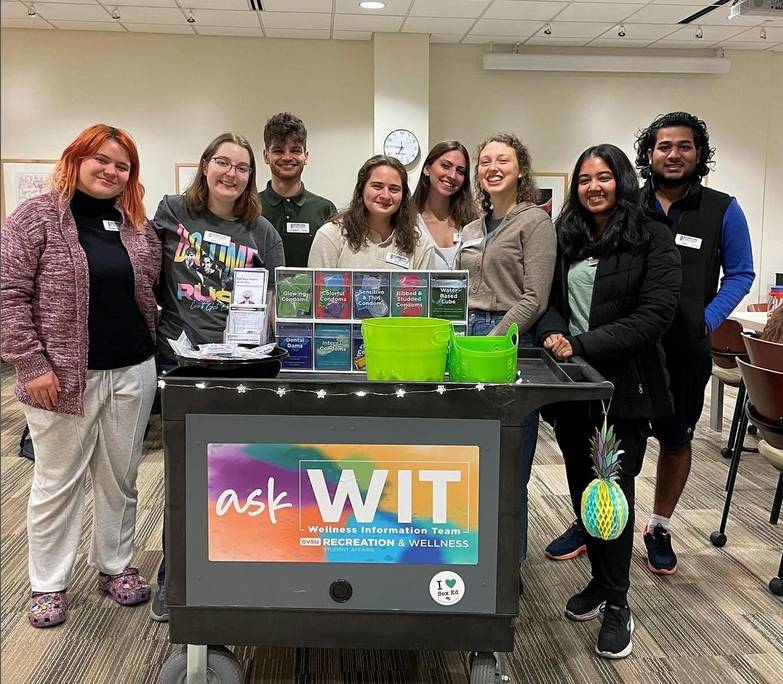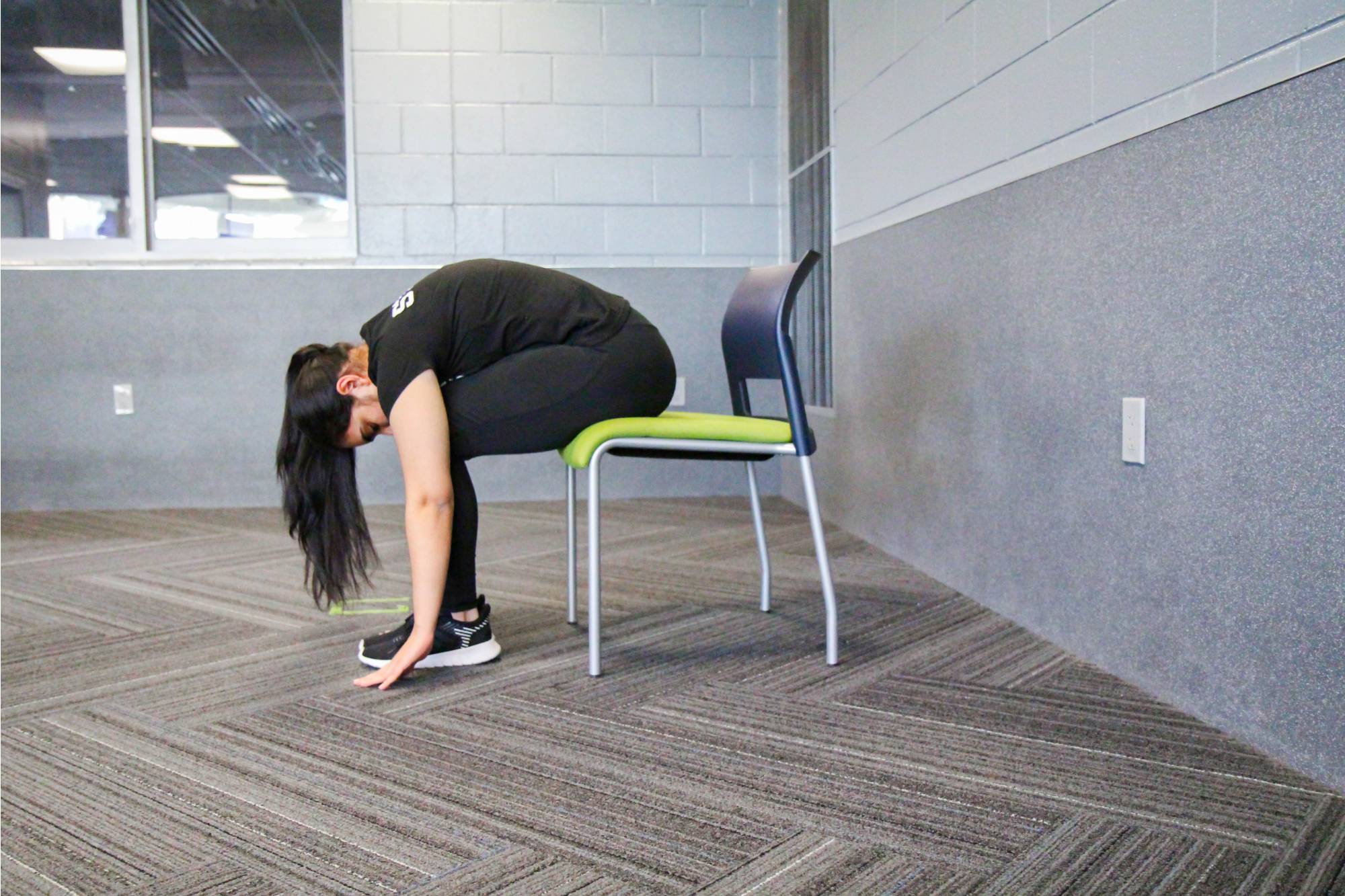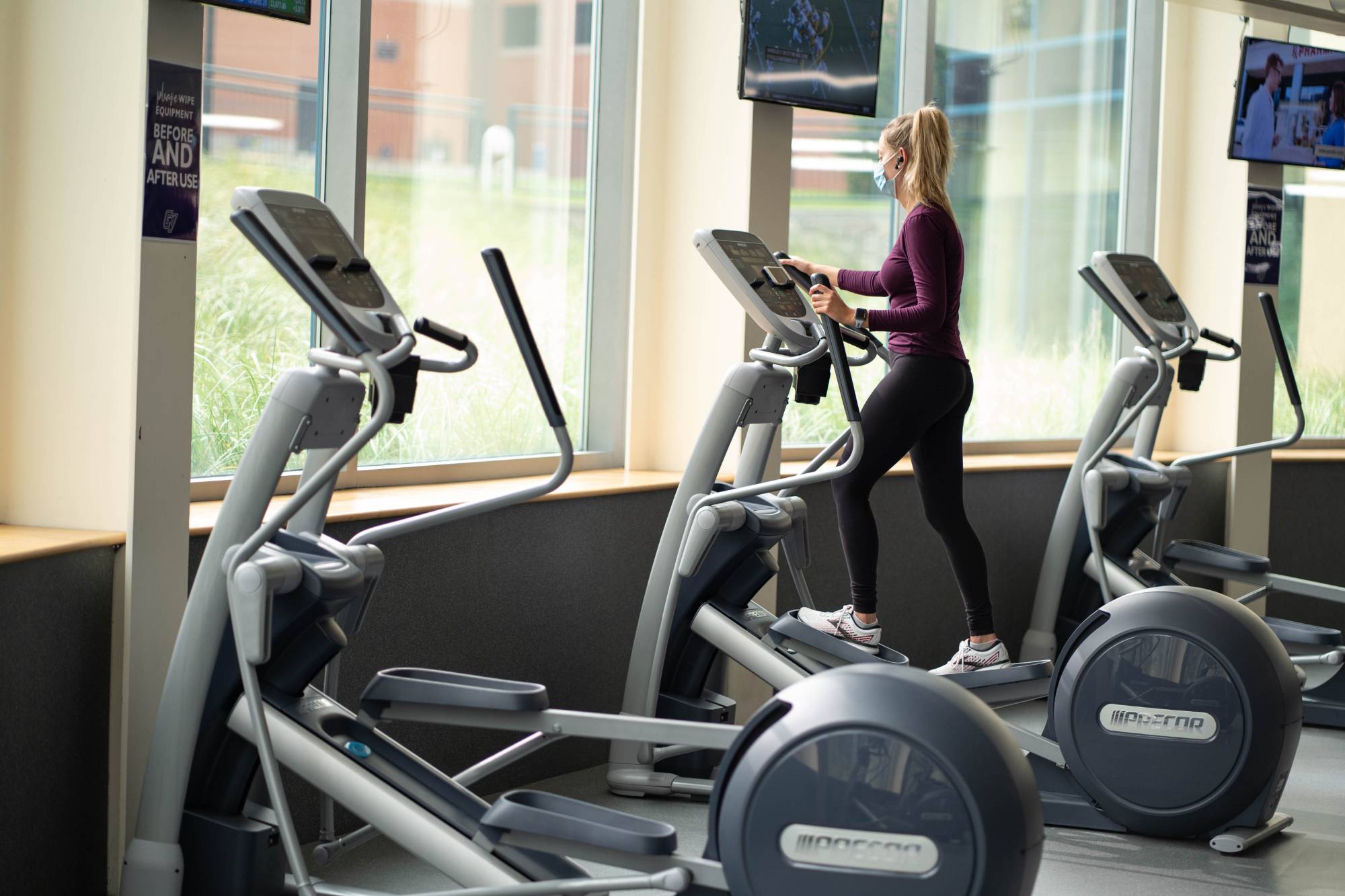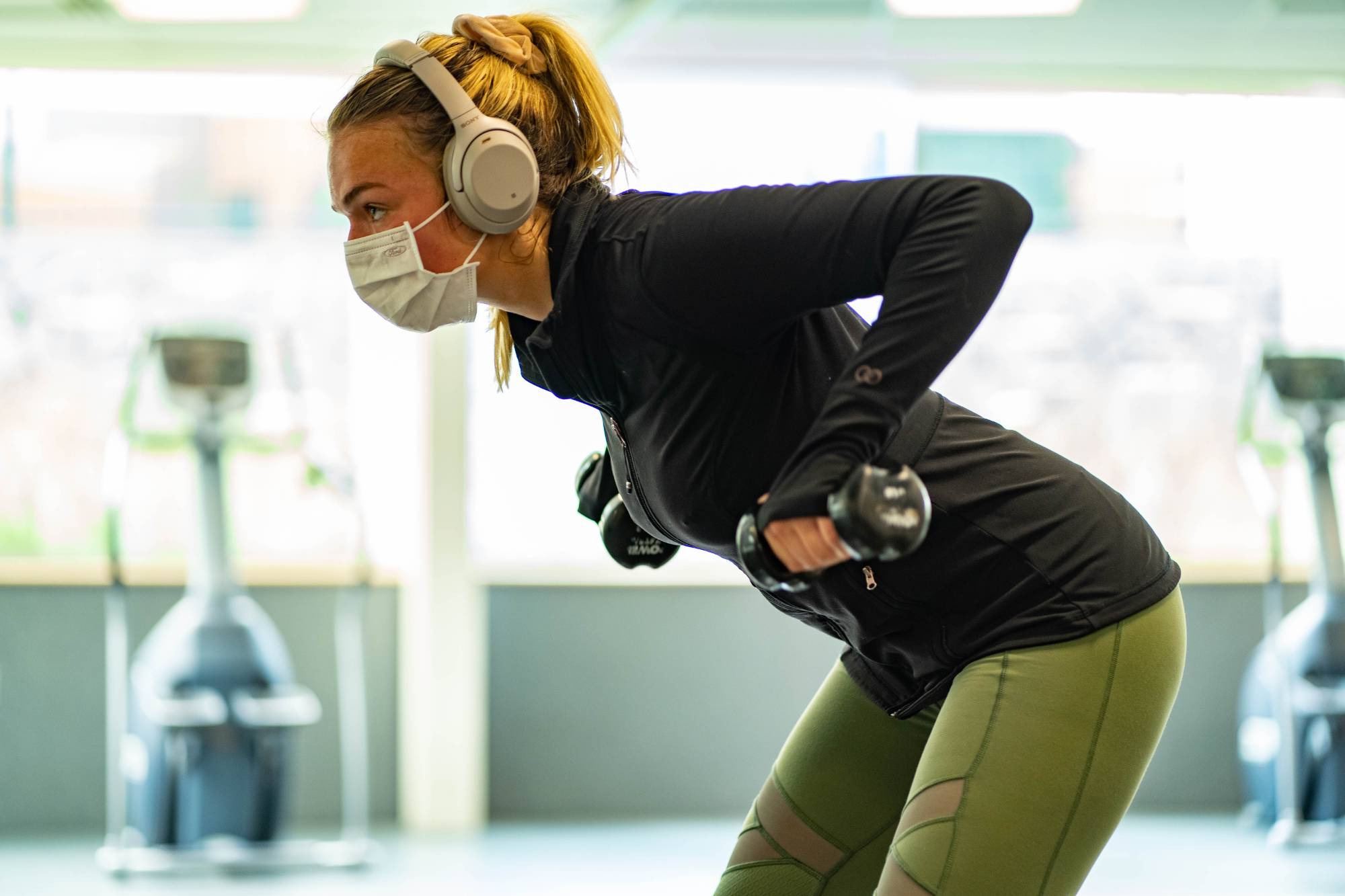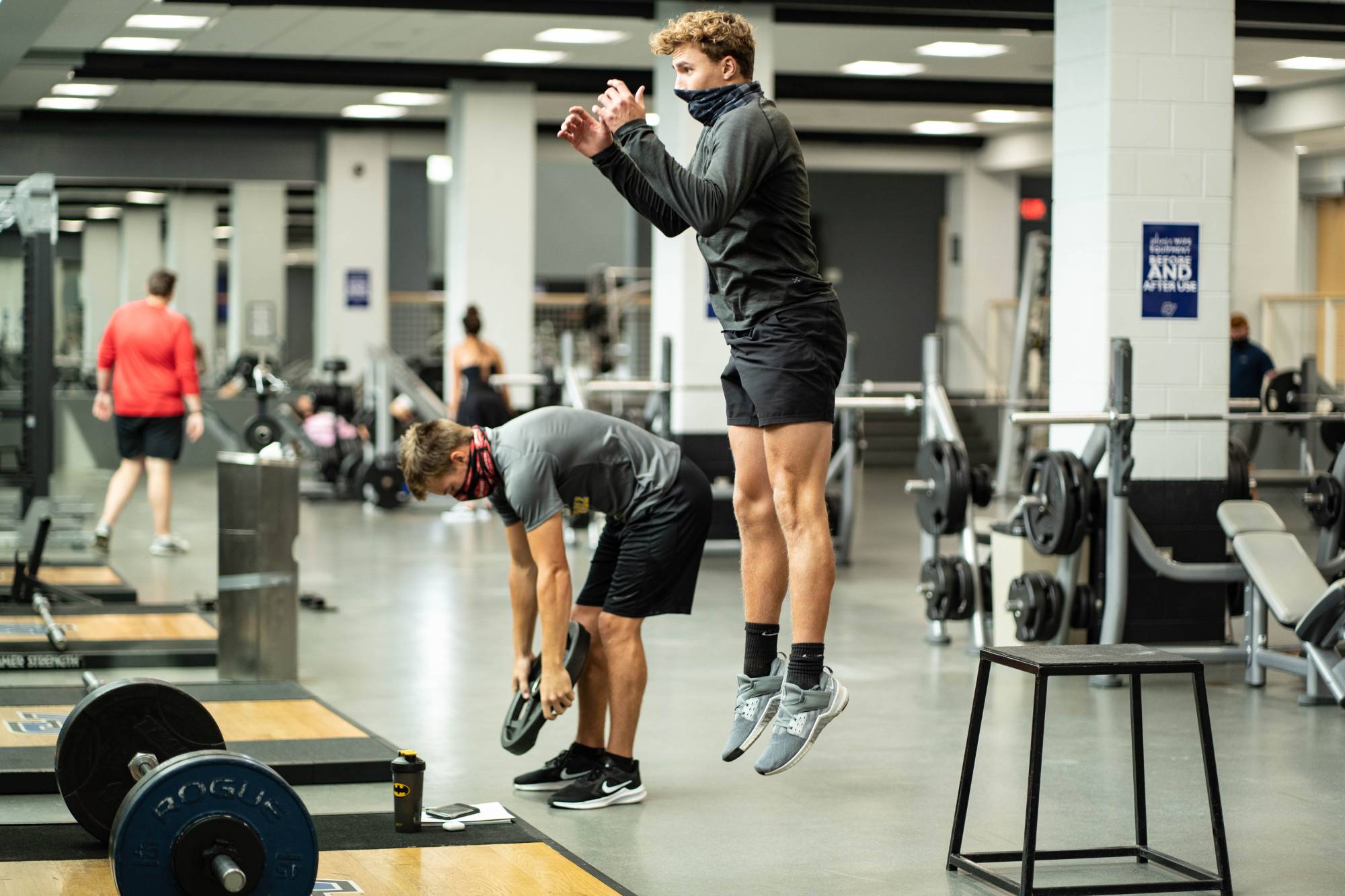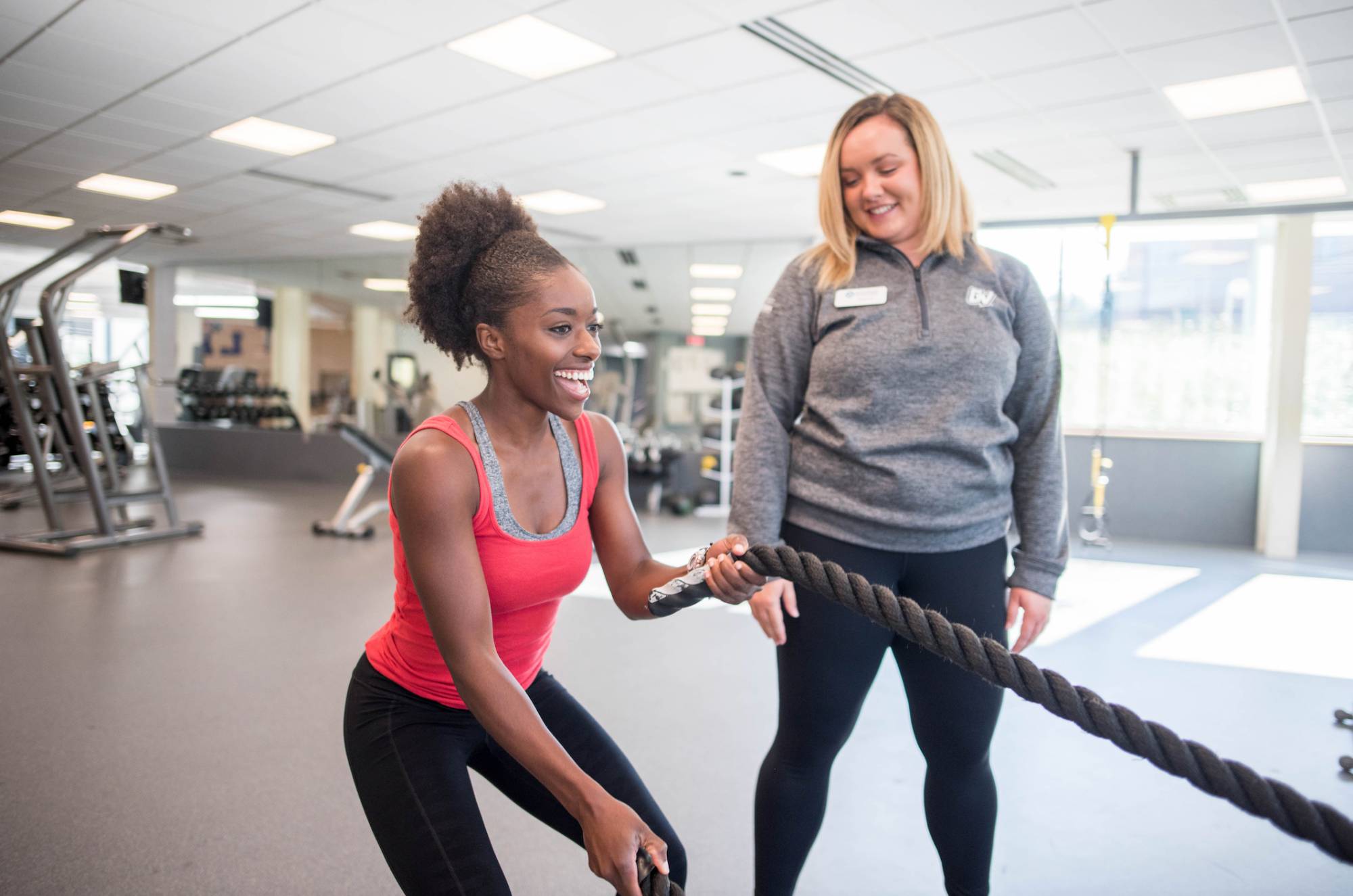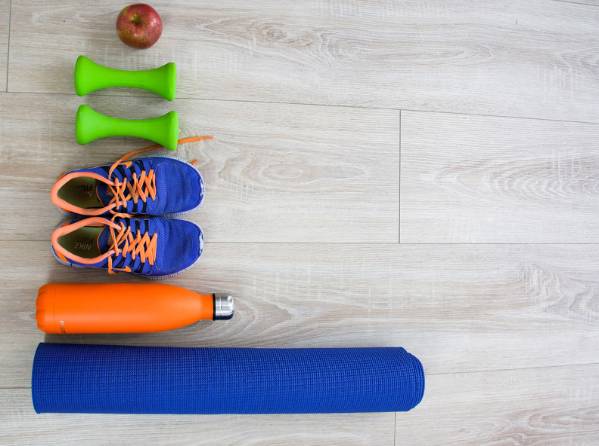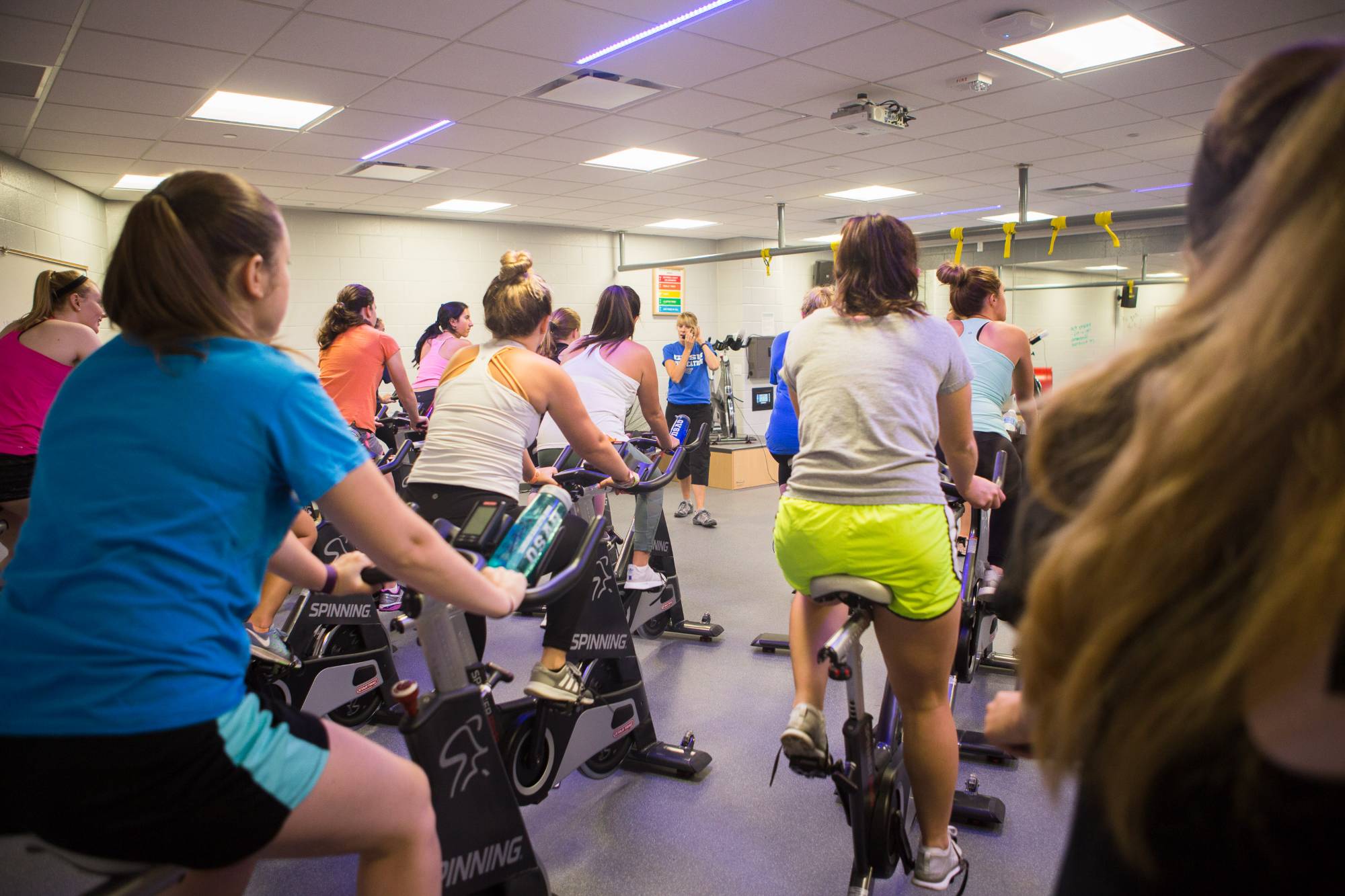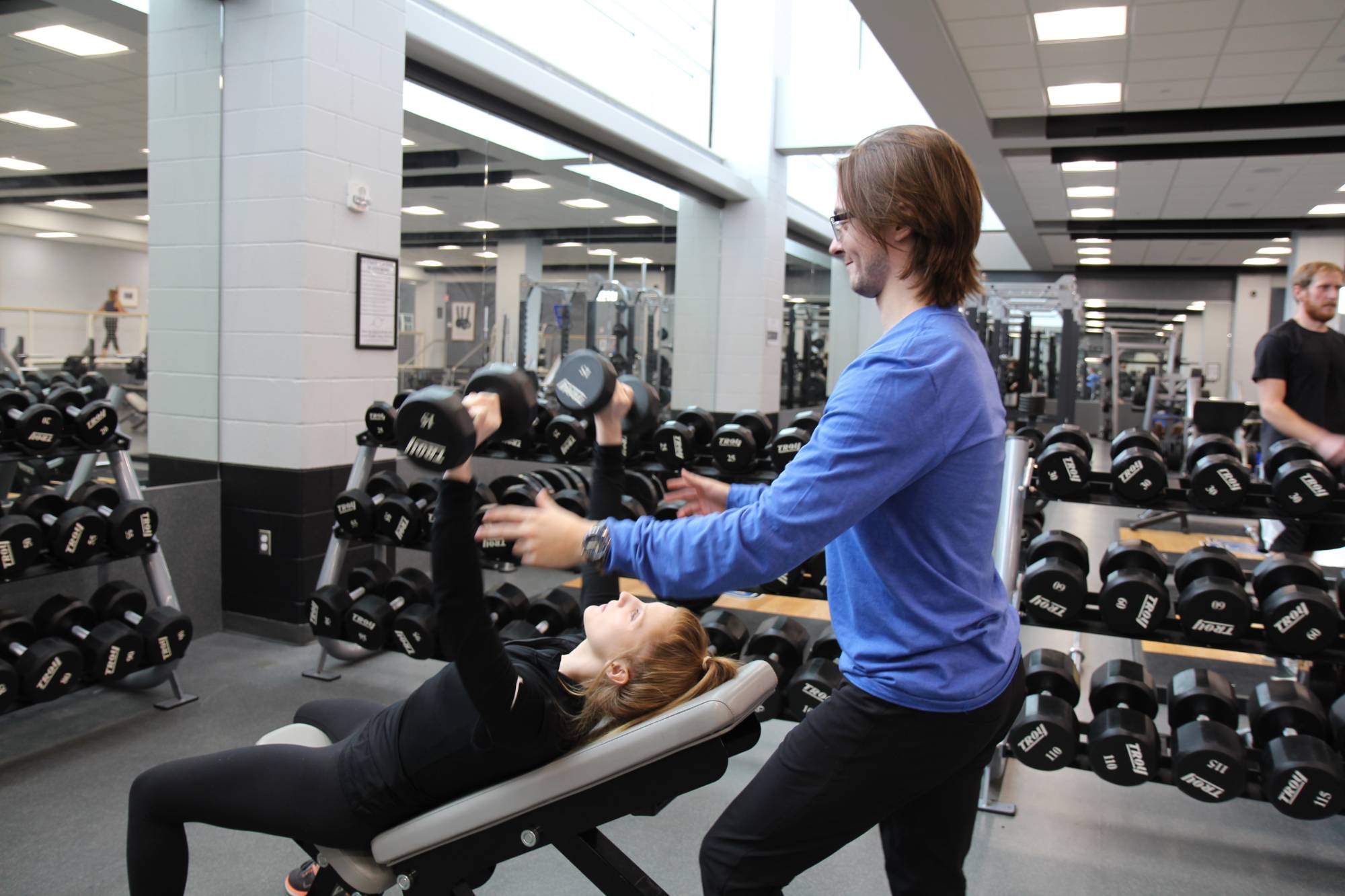Blog
Permanent link for Physical Activity & Beyond! on February 22, 2024
Physical wellness is just part of the wellness wheel, but a super important one! With spring around the corner, it is a great time to get outside to get some physical activity!
What is physical wellness and physical activity?
Physical wellness is about making positive choices to maintain a healthy body! Healthy looks different for everybody, but one way to make a positive choice for your body can be through physical activity! The WHO states that physical activity is any physical movement that engages your muscles while exerting more energy than you would while resting.
Why is physical activity important?
According to the WHO, Physical activity can help mitigate and manage different health risks. Some of these include heart disease, stroke, diabetes, numerous cancers, and hypertension. Physical activity can also be good for enhancing mental health, maintaining a healthy body weight, bettering balance and sleep, and improving overall well-being and quality of life.
What is the recommended amount of physical activity to get as an adult?
The WHO recommends that adults between the ages of 18-64 should get between 150–300 minutes of moderate-intensity physical activity or between 75-150 minutes of vigorous-intensity physical activity a week or some combination of the two. This rounds out to be about at least 20 minutes of moderate-intensity physical activity a day or at least 10 minutes of vigorous-intensity physical activity a day each week. The WHO also suggests that this age group should do moderate-intensive muscle-strengthening activities of all major muscles at least 2 days a week and be conscious of how much time is spent being sedentary.
What are the different ways you can be physically active on campus and beyond?
Recreation and Wellness offers many opportunities for students to get physically active and involved, including the Climbing Center, UFit plan, Intramural Sports, Club Sports, Personal Training, Group Exercise classes, Swim Lessons, and more! Athletic and Recreation Facilities also offers Open Swim hours at the pool, Racquetball Courts by reservation, Open Recreation Center hours to get a workout in or play basketball on the basketball courts, Open Turf/Track hours at the Kelly Family Sports Center to throw around a frisbee, play spikeball, or run on the track! And most of these activities are free for students or are discounted!
Have you ever heard of Ottawa County’s Parks?! Grand Valley is surrounded by them! There is one within walking distance of Grand Valley! Take a friend, a dog, or yourself on a walk, run, or bike ride to get some physical activity at Grand Ravines North. Not too far from this entrance is Grand Raives South, which has a dog park and a suspension bridge! If you’re looking for other parks to get some physical activity, look no further than Grand River Park or the Grand River Open Space, which provides trails and serenity within a 10-minute drive from campus!
There are many ways of getting physical activity indoors on campus and in the great outdoors surrounding campus! Physical activity is a positive way of taking care of your physical wellness to maintain a healthy body! Remember to do what is healthy for you, as healthy looks different for everybody, and be safe while performing physical activity, too!
By: WIT Peer Educator, Ru
Categories:
Fitness
General Wellness
Outdoor Adventures
Press Pause
Rest
Posted
on
Permanent link for Physical Activity & Beyond! on February 22, 2024.
Permanent link for New Year, New Series with WIT! on January 18, 2024
Do you ever get into a routine and then come to realize your week went by in a blink? Do you ever get the feeling that what you are learning is losing its charm? Are you wondering how you can be more present and have more fun? Well according to many studies, the answer could be curiosity:
- Beat the winter blues with curiosity. Studies have shown that when we discover or learn about something new our brains send us signals that make us feel good, boosting our mood.
- Build relationships. Research shows that genuine curiosity is one of the biggest factors that contributes to creating a closer connection when interacting with others.
- Score higher on assignments. Whether at school or any other occupation, having curiosity about the task at hand can improve the overall outcome of our efforts.
This winter, the WIT Peer Educators are excited to keep your adventuring and curiosity going with some new content each week! We are a group of fellow students with a passion for helping our peers stay informed and inspired about health and wellness topics.
We are back this winter with a series of content including some of our favorite topic areas of sexual health, nutrition, rest, the 8 dimensions of wellness, and much more! We have so many topic ideas we are excited to share with you this semester. Watch for a post every Thursday, either on Instagram, the RecWell blog, or both!
If you can’t wait until Thursday, check out our past blog posts on our website. Take a look at everything from “What is Sexuality?” to “Easy Winter Meals to Make in Your Dorm” to “How to Unleash Your Inner Sleeping Beauty". Got another idea you’d like to see? Head over to our Ask WIT question box and we’ll get one written just for you!
If blog posts or Instagram aren’t your thing, scroll through the student wellness website containing a plethora of information and resources, request a presentation on our website, catch us at the WIT cart (probably inside this semester) or attend some of our many events, including the continuation of the Eat Well series with Laker Food Co.
Whatever you might be up to this winter, we hope you can take some moments to pause and explore a range of wellness topics to boost your mood, foster growth in the 8 dimensions of wellness, put more joy into learning, and reap the benefits of curiosity!
By: Josie, WIT Peer Educator
Categories:
Fitness
General Wellness
Nutrition
Press Pause
Rest
Sexual Health
Sleep
Winter
Posted
on
Permanent link for New Year, New Series with WIT! on January 18, 2024.
Permanent link for Relieve the Stress of Sitting on November 18, 2020
With virtual work and school, it can be hard on your body to sit consistently. Since the beginning of COVID-19, there has been a 33% decrease in physical activity, from 108 minutes per week to 72 minutes per week. Alternatively, there has been a 28% increase in sitting time, from 5 hours a day to 8 hours.
Keeping yourself active and moving, even if you are stuck at a desk, can be beneficial for your health. Wherever you are, most stretches can be modified for either sitting or standing. If able, you can stand at your desk while stretching, or if you’re sitting working on midterms or school projects, there are also stretching techniques that can be done seated. Stretching will help with posture, pain, and productivity, and here are some you can do:
Neck And Shoulder Stretch
Hunching over your desk can start to place strain on your neck
and stiffen your shoulders.
- Stand at your desk, reach your arms behind you, interlock your finger, and lift your arms.
- Start to lean forward and bring your chest to your legs like a forward bend, allowing your arms to hang.
- You should feel a stretch in your chest and shoulders, releasing built-up tension.
Seated Hip Stretch
Having tight glutes can cause pain in your knees and lower back.
Making sure to stretch your hips and keep the glutes loose and active
to help decrease other pains and possible injuries.
- Sit in your chair with your feet flat on the floor, take one ankle and place it on the opposite knee.
- Keeping your back straight, from here, start to fold forward, bringing your chest to your lap.
- The more you bend, the deeper the stretch will begin to feel in your hip and glute area.
Spinal Twist
Being seated can cause a lot of pressure on your lower back,
spinal twist can help release lower back pressure as well as
elongating the supporting back muscles. This can be done either seated
or standing.
- When seated, place your left hand on your right knee and twist your entire body towards your right side
- Looking over your shoulder, hold here then unwind and twist to the other side
- When standing, have your arms straight in front of you.
- On an exhale, open up your arms to one side
- Bring one arm behind you and keep the other in front. Hold here, then unwind and repeat the process on the other side.
Seated Cat-Cow
The spine can hold a lot of tension throughout the day moving the
spine in flexion and extension can help to loosen the body
- Sit up straight, and on an inhale, arch your back looking up and hug your shoulder blades together moving into the cow part of the pose.
- On the exhale, round the back and move your chin towards your chest moving into the cat part of this pose.
- Repeat as many times as you need.
Rib Circles
Creating circles with your ribs will create more movement in your torso.
- Keeping your hands on your thighs, move your ribs from left to right.
- After you feel comfortable with that, think about shifting your ribs forward and back, like you would with cat-cow.
- Put those together moving from right to the front, left then back.
- Repeat as you need and try to rotate both clockwise and counterclockwise.
Forward Bend
This is a pose that helps release the tension that can build up
in your lower back from hours of sitting.
- Inhale to help lengthen your spine as tall as you can.
- Exhale, and folding forward, bring your chest into your knees.
- Relax into the pose and take a couple of breaths with your chest to your knees, letting your arms and head hang heavy towards the ground.
- Come out of the pose when you're ready by leading with the top of your head, walking your hands up your legs, and keeping your spine straight and tall.
Whether you are working remotely, have all online classes, or are going into an office, keeping your body moving is key to living a healthy life. Try to stand up and move around once every hour. Change what you're sitting on, whether that be a swivel chair or exercise ball. If you’re able, work at a standing desk. If you don't have access to a standing desk, make one at home using laundry baskets, books, or any crates or boxes you may have laying around. Even just moving your work environment from the dining room to the kitchen table to outside can keep yourself moving. Take just a little time out of your day to stay active. A body in motion stays in motion, even if it’s just a few stretches a day.
By: Erin Colling
Sources
- Dickens, Louise. “15 Simple And Quick Office Stretches To Boost Work Efficiency.” Lifehack, Lifehack, 14 July 2014, www.lifehack.org/articles/productivity/15-simple-and-quick-office-stretches-boost-work-efficiency.html.
- Rasmussen, Rebecca, and Rebecca Rasmussen. “10 Chair Yoga Stretches To Undo The Damage of Sitting.” Paleo Blog, 13 Mar. 2019, blog.paleohacks.com/chair-yoga-stretches/.
- Tummee.com. “Standing Spinal Twist Pose I Steps.” Tummee.com, www.tummee.com/yoga-poses/standing-spinal-twist-pose-i/steps.
- Wedig, Isaac J, et al. “Infographic. Stay Physically Active during COVID-19 with Exercise as Medicine.” British Journal of Sports Medicine, BMJ Publishing Group Ltd and British Association of Sport and Exercise Medicine, 23 Oct. 2020, bjsm.bmj.com/content/early/2020/10/23/bjsports-2020-103282.
Categories:
Fitness
Posted
on
Permanent link for Relieve the Stress of Sitting on November 18, 2020.
Permanent link for Exercising with a Face Covering on November 2, 2020
The best face coverings for exercise should keep you safe, comfortable and dry, while being flexible enough to bend and move without falling off during your workout. Stay safe and comfortable while you break a sweat.
Why do I need to wear a face covering while exercising?
The Center
for Disease Control and Prevention (CDC) recommends wearing a
face covering as a simple barrier to help prevent respiratory droplets
from traveling into the air and onto other people when the person
wearing the face covering coughs, sneezes, talks, or raises their
voice. This is called source control. The use of face coverings is
even more important in an environment such as the Recreation Center,
where individuals increase their respiratory rate (heavier
breathing). The heavier an individual is breathing, the further their
respiratory droplets can potentially spread.
Is it safe to exercise with a face covering on?
Yes; it's safe to wear a face covering while exercising, but
considerations and precautions should be made. It’s recommended that
you perform low- to moderate-intensity exercise rather than vigorous
exercise while wearing a face covering. This is because of the
decreased airflow allowed through the face covering which is caused by
an increase in inhalation and exhalation resistance. This decrease in
air flow can make it more difficult to catch your breath and impact
your ability to properly regulate body temperature. A study published
in the International Journal of Environmental Research and Public
Health concluded that the increase in inhalation and exhalation
resistance has a very minor impact on the body’s physiological ability
to effectively achieve respiratory ventilation (less than 3% during
low to moderate physical activity). In other words, exercising with a
face covering is safe, though you may experience some slight discomfort.
Selecting and Wearing a Face Covering while Exercising
Look for face coverings with two or more layers that are made
from lightweight, moisture-wicking materials that will keep your face
dry and comfortable. Since you’ll be moving, select a face covering
that has a bit of stretch to it to ensure that it moves with you and
doesn’t slide down during your workout.
Your face covering should be comfortable and snug around your cheeks and nose, and large enough to cover your nose and mouth. Test and adjust the fit prior to exercising. If your face covering is uncomfortable, or makes breathing difficult prior to exercising, chances are it will continue to be uncomfortable and hard to breathe in during your workout.
Tips
- Check to ensure your face covering fits properly, covers your mouth and nose, and is secure so it doesn’t slide down or move during your workout.
- Take a moderated approach to exercise intensity. Face coverings may increase perceived effort and decrease performance during your workout.
- If you tend to sweat a lot when you exercise, bring an extra face covering with you to replace the damp one.
- If possible, have a few face coverings that you use specifically for exercise. This will help ensure you have a clean face covering available each time you plan to exercise.
- Be cautious and err on the side of caution. While exercising with a face covering, some may experience side effects including dizziness, light-headedness, and shortness of breath. If these symptoms occur, stop exercising.
- Change your mindset. Be grateful that the recreation center is open for you to utilize. Wearing a face covering is a small inconvenience compared to not being able to access the facility.
Lastly, wash your hands with soap and water, or use an alcohol-based hand sanitizer that contains at least 60% alcohol prior to putting on your face covering. Avoid touching your eyes, nose or mouth when removing your face covering, and wash your hands afterwards. While exercising, your face covering should be viewed as a barrier, and not an impenetrable shield. Therefore, continue to follow safe social-distancing practices, regular hand washing, and other sanitation measures, such as thoroughly wiping down equipment before and after use.
By: Becca Guilford and John Offerman
Considerations for Wearing Face Coverings:
- Slow the spread of COVID-19. (2020, August 7). National Center for Immunization and Respiratory Diseases (NCIRD), Division of Viral Diseases. Retrieved from https://www.cdc.gov/coronavirus/2019-ncov/prevent-getting-sick/cloth-face-cover-guidance.html
- Roberge, R. J., Kim, J.-H., & Benson, S. M. (2012). Absence of consequential changes in physiological, thermal and subjective responses from wearing a surgical mask. Respiratory Physiology & Neurobiology, 181, 29-35.
- Scheid, J. L., Lupien, S. P., Ford, G. S., & West, S. L. (2020). Commentary: physiological and psychological impact of face mask usage during the COVID-19 pandemic. International Journal of Environmental Research and Public Health, 17, 3-4.
Categories:
Fitness
General Wellness
Posted
on
Permanent link for Exercising with a Face Covering on November 2, 2020.
Permanent link for Exercising After COVID-19 on October 28, 2020
We are living in a new normal, a normal of face coverings and social distancing. Because COVID-19 is still so new to us, there are a lot of questions and uncertainty around the virus and its impact. It is, however, important to get back to some form of “normal” for your overall health. We can do this while adapting to the recommended Center for Disease Control (CDC) guidelines and keeping others safe.
How COVID-19 Effects Your Body
COVID-19 is a viral infection; the virus sticks to the small
hairs found in your nose and cells found in your mouth. Once the virus
has attached to the cells in your body, the active replication starts
almost immediately in the upper respiratory tract. 80% of people will
have mild symptoms such as a cough, fever, and loss of taste or smell.
Of that, 13.5% of people will have to be hospitalized due to shortness
of breath. Symptoms and signs of distress will appear in individuals
10 days after they contract the virus. After you contract the virus,
it is possible to get your lungs back to normal, but it will not be an
overnight fix. As a result of COVID-19, your lungs will begin to
develop scar tissue, which will take approximately six months to a
year to fully heal and get back to normal oxygen levels. After you
contract the virus and are symptom-free, you are able to get back to
daily activities, such as working out. However, you should consult
with your primary care provider on the best course of action for your
personal needs.
Before Starting Back Up with Exercise
Upon
arrival back into your fitness or exercise routine, make sure you are
limiting your alcohol and tobacco consumption, eating healthy meals,
trying not to skip meals, drinking plenty of water, and maintaining a
healthy sleep schedule to aid in your body’s healing process. Drinking
alcohol does not cure COVID-19, and the excess use of alcohol can
be harmful by increasing your health risks. Before you enter into
exercise, make a plan for modified exercises on your first day back.
Having more than one plan and being flexible is also important for
easing back into your routine. Some things to keep in mind:
- Breaking an intense 30-minute exercise into two 15-minute low to moderate sessions
- Modifying your workout
- Checking facility websites for updated cleaning, capacity guidelines, and any equipment restrictions
During Exercise
Once you are able to get back to exercise, avoid pushing yourself
too hard; your body needs time to heal. You should only be working at
about 50% of your usual intensity, and slowly ease your way back into
it. Make sure to stay hydrated when working out, and monitor any other
changes that your body may experience. Some individuals may feel
lightheadedness or dizziness when returning; try not to panic. Slow
down the workout and take a break to catch your breath. If symptoms
don’t subside, then, following CDC and facility guidelines, take your
face covering off to help maximize airflow. Try to avoid exercises
that are extra demanding of your cardiovascular system, like a HIIT
class, as it may be more difficult or cause more symptoms of
lightheadedness and dizziness. Finally, as always, keep up with CDC
guidelines to wash your hands regularly, stay six feet away from
others, and avoid face touching.
Staying active, whether it’s in the gym, outside, or at home, is beneficial to your health and wellness. Most forms of exercise can be performed almost anywhere. Especially now, it’s easy to find at-home workouts online. Whether you are someone who benefits from doing an at-home workout, going for a walk, run, bike ride, or hike, it’s important to keep moving and stay active. And don’t forget: stay hydrated, eat a healthy snack or meal, and do an active recovery cool-down to gradually lower your heart rate back to its resting state. If you go to the gym make sure to wash your hands with soap and water or use a hand sanitizer that is at least 60% alcohol, use your face covering, and maintain social distancing. Staying active and adapting a routine is one of the most important things you can do to help your overall health during this time.
By: Erin Colling
Resources:
- Exercising after COVID-19 Flyer
- GVSU Recreation & Wellness
- GVSU Alcohol & Other Drugs Services
- GVSU Campus Health Center
- GVSU Family Health Center
Sources:
- Reynolds, Colleen, et al. “How to Adapt Your Workout While Wearing a Mask.” OSF HealthCare Blog, 8 July 2020, www.osfhealthcare.org/blog/how-to-adapt-your-workout-while-wearing-a-mask/.
- “Should I Exercise with a Mask On?” Mercy Health Blog, 4 Sept. 2020, blog.mercy.com/coronavirus-covid-19-face-mask-while-exercising/.
- “What Are the Effects of COVID-19 on the Lungs?” Medical News Today, MediLexicon International, www.medicalnewstoday.com/articles/covid-19-what-happens-inside-the-body.
Categories:
Fitness
General Wellness
Posted
on
Permanent link for Exercising After COVID-19 on October 28, 2020.
Permanent link for What's UFit, again? on July 16, 2019
So, you have fitness and wellness goals, but how do you know you’re on track to achieve them? Or, maybe you don’t even know where to start. Sometimes the pathway to your fitness goals isn’t very straightforward. We get it; we know you have a lot going on and you may not be an expert. Luckily, our UFit Plan provides you with a one-on-one consultation with a fitness specialist to discuss your wellness goals, current health, fitness, nutrition, and lifestyle status. And the best part? It’s FREE for students! Basically, it’s free personal training!
If you’re having a hard time maintaining an active lifestyle, consulting with our fitness specialists can make your goals more achievable. In your first appointment, you will discuss your goals, fitness preferences, and schedule. A plan is being created for you, and only you, so everything will be considered to make this plan manageable for creating life-long habits. Additionally, a break down will be provided outlining the importance of how nutrition, stress management, and activity levels play in your overall wellness. We’ll also give you helpful suggestions in managing them.
You will complete a fitness assessment in that first appointment to evaluate your current status of endurance, strength, body composition, flexibility, and other benchmarks around achieving your established goals. These benchmarks will be recorded so that you can track your progress as you move through your fitness journey.
“I chose to participate in the UFit plan because I liked the idea of meeting with someone to talk about my goals and help make a plan for my personal fitness goals,” said Sofia Draper, GVSU Student. “It was amazing to sit and talk about my health with someone who knew how to answer the questions I had and debunk some of the myths I had heard.”
After your first meeting, you will receive a personalized plan to follow until your second appointment. After working through your routine, you have the option to complete a prescription appointment. This appointment will involve establishing a reasoning behind the exercises and mobility techniques that have been personalized to you. The plan is designed for you specifically, and our fitness specialists are committed to ensuring that you understand the purpose of the plan and are comfortable with what it entails. Additionally, an equipment orientation will be provided in this appointment to evaluate all of the equipment in the Rec Center and learn how to get set up on each machine.
From there, an additional appointment will be scheduled weeks following the prescription appointment to evaluate how the plan worked with your fitness specialist. From there, the plan can be evaluated by both the fitness specialist and the client with room to reevaluate the current plan and make any changes if needed. You may also complete another round of fitness testing to track your progress from your initial appointment.
“Getting started with the UFit plan during my freshman year at GV helped me to take control of my personal health and fitness,” said Emma Merlington, GVSU Student. “It gave me personalized options for working out and helped motivate me to schedule in time for the gym.”
As mentioned, UFit is FREE for GVSU students, but also available to non-students for $25. To get started, contact the Fitness and Wellness Services offices at 331-3659 or rec@gvsu.edu.
By: Alexis Smith
Categories:
Fitness
Posted
on
Permanent link for What's UFit, again? on July 16, 2019.
Permanent link for The Importance of Rest Days on July 9, 2019
If you hear “rest day” and visualize a day spent watching Netflix with a carton of ice cream, there may be some confusion about what a rest day really is. Rest days are built on misunderstanding whether it is perceived as being lazy, or that they consist of completely sedentary activity. Whether you don’t currently incorporate rest days in your routine, or if you might have the wrong idea about what they are, rest days should be considered a regular addition to your workout week.
There is a lot of value in balancing workouts with designated rest. Although, rest days are not to be confused with “cheat days.” Cheat days allow you to give yourself a break when it comes to your diet. Rest days allow your body to recover by taking time off from training, which is strictly related to your physical activity. Either way, both can provide similar benefits, such as an increase in motivation and well deserved mental breaks.
While it may feel like a waste of time to give your muscles a break, rest days are key to forward progress. Your body is actually doing a lot of work on those days, and it leads to an extreme pay off. While you take a mental relaxation from training, your body is working hard to regain your energy and generate new muscle tissue. If your goal is to become stronger, you need rest days.
What are other benefits, you ask? Rest days reduce the risk of injury, improve your sleep, and can even increase your motivation level. If you’ve recently started an exercise routine, it’s easy to get excited and cram too many workouts into one week. While high motivation is good, it may cause you to overwork and can eventually cause you to lose focus. Incorporating rest days into your routine gives you a chance to change it up and get excited about returning to your normal exercise schedule. Your routine should never feel like a chore. If you’re exerting too many hours into your week, you might push yourself to a plateau of motivation.
Although, don’t get too excited. This doesn’t go to say that your rest days have to be, or should be, filled with sedentary activity. While a day spent in bed might sound enticing, active rest days are the perfect balance. Active rest days can provide enough rest and relaxation for your mind and muscles, but also won’t set you back enough to a lack of motivation or leave you feeling stiff when you hop back into your routine. Need suggestions? Take a light walk, go swimming in the lake, play frisbee with a friend, or do anything that keeps you moving just a little.Your rest days shouldn’t feel forced; fill them with activities you look forward to.
If your goal is to transform fitness into a lifelong habit, there will most likely be days where you just can’t find the time, or you just need a day to mentally unwind. Don’t feel guilty about scheduling your rest days. It is important to slow down and allow your body to recover so you can move further toward your goals in the long run. Be kind to yourself and recognize your perfect balance.
By: Alexis Smith
Categories:
Fitness
Posted
on
Permanent link for The Importance of Rest Days on July 9, 2019.
Permanent link for Everything you need to know about Group Exercise on June 25, 2019
Looking to shake up your fitness routine? Consider Group Exercise classes as a way to provide variety in your everyday workout. Not to mention, a little bit of fun too! Whether your goal is to simply start exercising, increase your accountability, or just find a fun way to stay active, Group Exercise may be the answer for you!
Participants of all fitness levels are welcome to participate in Group Exercise classes, since classes are formatted to accommodate beginner, intermediate, and advanced participants. Plus, all participants can find a range of different course options suited to their interests. Various class options provide variety and room for growth for each individual’s fitness journey.
For beginners, Group Exercise may be a great first step. For those who don’t feel experienced or comfortable enough to workout alone, Group Exercise is a perfect option. Classes are led by an instructor to provide a comfortable and welcoming atmosphere, while also providing guidance to those who may need it.
"I have never been an athletic person,” said Morgan, GVSU student. “Taking group exercise classes makes me feel good and gives me a way to simply exercise without the sports aspect and judgement of others!”
Even our advanced participants find that following an instructor is a great way to create structure, especially for those who are accustomed to following workouts provided by a coach or trainer. Group Exercise is also great for those who aren’t experienced in developing their own exercises, yet it still allows them to achieve their fitness goals.
"I participate in Campus Recreation services because I like to have structure and someone else to challenge me during workouts, due to the fact that I am a former athlete,” said Terrell Dorsey, GVSU student. “Also, why worry about what my workout should be when I can attend any GroupEx class with the GroupEx pass?”
As discussed in Rec&Well’s last blog, creating accountability is a monumental tool when turning fitness activities into habits. Purchasing a Group Exercise pass is an alternative form of that external accountability we mentioned. Attending Group Exercise classes consistently helps get you into a routine and make exercising a weekly habit.
“I enjoy participating in Group Exercise classes to help me to maintain accountability and stay motivated,” said Karmen Johnson, GVSU student. “Campus Rec has allowed me to grow, get involved, and step out of my comfort zone."
Group Exercise is also the perfect activity to get together with friends, and even make new ones! Most class formats are 45 minutes, making it easy to coordinate with friends and fit into your weekly schedule.
“I met close friends, and it was something I looked forward to,” said Meg Duffey, GVSU student. “The classes jump started me into going to the gym multiple days a week. Now, going to the Rec Center is a part of my routine. Campus Rec has such a positive energy around it, and I really enjoy being a part of its community.”
Ready to get started?
To participate, you must purchase
an all-class pass each semester Passes are available for
students, faculty, staff, and GVSU alumni who have a current
fieldhouse membership. Passes are good for the entire semester and for
as many classes as you desire. Plus, the first week of classes is
Try-It-Before-You-Buy It, meaning you can come try any of those ~50
classes at no cost and with no pass that week!
Check back in August or follow @GVSURecWell on Instagram, Facebook, and Twitter to be notified when the Fall schedule is available and how to purchase your pass at that time. For more information and to see class descriptions, visit the Recreation and Wellness website.
Categories:
Fitness
Posted
on
Permanent link for Everything you need to know about Group Exercise on June 25, 2019.
Permanent link for Starting and Keeping your Fitness Journey on June 18, 2019
Whether you never had much interest in living a healthier lifestyle, or you’ve found yourself straying away from those good habits for a little too long, it’s not always easy to jump into an exercise routine. Recreation and Wellness would like to give you a few of our best tips to starting to make healthier lifestyle choices then transforming those into lifelong habits.
Don’t ignore your foundation
You’ve probably heard this a few times, but it is essential to be
sleeping 7-8 hours per night. Think about it this
way, your body needs time to recover and regain energy to be able to
rebuild the muscles that you worked in your last exercise. By skipping
this step, you’re putting yourself at a disadvantage for the potential
that your workout could have. Don’t sabotage your fitness journey by
not getting enough sleep. Instead, make sleep a priority. You’ll feel
better not only during your workouts, but throughout the entire day too!
Your energy level doesn’t stop at just getting good sleep, it also has to do with the fuel that you’re giving your body. Yes, we’re talking about food! Both the calories that you are taking in, as well as the nutrition in those calories, matter toward your overall wellbeing. While you may be receiving enough calories from eating a donut each morning, it will not give you the nutrients and the foundation that your body needs. Getting a balanced breakfast and prioritizing your nutrition will help you better reach your goals and leave you feeling better.
While this is a lot easier said than done, controlling your stress is crucial to obtaining a consistent fitness journey. Stress interferes with the interest in engagement for physical activity and will leave you feeling unmotivated to continue. But guess what? Physical activity produces endorphins that will assist with your stress levels (if a moderate level of stress). While stress is inevitable and we all experience it (yes, everyone!), it is important to take action in monitoring stress levels the best you can, limiting interference achieving your fitness goals.
Outline your goals
Outlining your goals will keep you on track. It is important to
establish those goals before you start, as this will allow you to
witness your progress toward your goals. Checking out the UFit
program through Recreation & Wellness is a great place to
start if you aren’t sure how to establish those goals.
Need ways to remind yourself of your goals? Create a vision board, or scatter motivational notes in places you will see them everyday. Motivational quotes, pictures of exercises, or even just writing out your goals will remind you of why you started (and why you want to keep going on) this journey.
Do something everyday
Fitting in some form of physical activity everyday is essential
to staying on track. If some days are busier than others, don’t feel
like you need to engage in strenuous activity; something is always
better than nothing. Whether it be walking your dog, playing a quick
game of volleyball, or even shoveling snow, you’ll (more times than
not) be glad you did it!
You don’t always have to make it to the Rec Center. Taking the stairs or riding a bike to class are great ways to get in your daily workout when you might not have time for an organized exercise session. Incorporating various activities will keep you on track without even thinking about it.
Create internal and external accountability
Instead of punishing yourself for not getting an exercise in,
create proactive forms of accountability to avoid negative emotions.
Internal accountability can be created just by establishing
S.M.A.R.T.* goals and engaging in a routine. Do things ahead of time
to make it easier for you in moments you feel less motivated. Pack for
the Rec the night before, meal prep for the week, or make a commitment
to yourself that you will exercise for so many days per week.
Engaging in activities outside of individual exercise, you can create external accountability. Sign up for group exercise classes or schedule time with a personal trainer to create more motivation Often times, when you make a commitment to others, you’re more likely to make it happen. Plus, it’s a good way to stay connected to others and increase both your consistency and yours!
Keep it fun and fresh
Your fitness journey should be fun! It shouldn’t feel like a
chore to be healthy, and it doesn’t have to be. Finding things to stay
active that spark your interest is important when creating fitness
habits. Play a new
sport, try rock
climbing, or plan your own hiking
trip. The possibilities are endless, and staying active should
never be boring.
If you’re looking for fresh ways to get involved and stay active, check out the Recreation & Wellness website for even more opportunities change up your fitness routine.
*S.M.A.R.T. goals are: Specific (simple, sensible, significant), Measurable (meaningful, motivating), Achievable (agreed, attainable), Relevant (reasonable, realistic and resourced, results-based), and Time bound (time-based, time limited, time/cost limited, timely, time-sensitive).
By: Alexis Smith
Second image courtesy of My Fit Station
Categories:
Fitness
Posted
on
Permanent link for Starting and Keeping your Fitness Journey on June 18, 2019.


